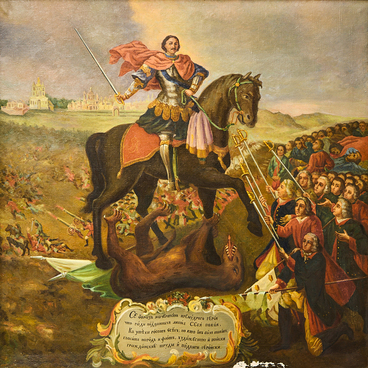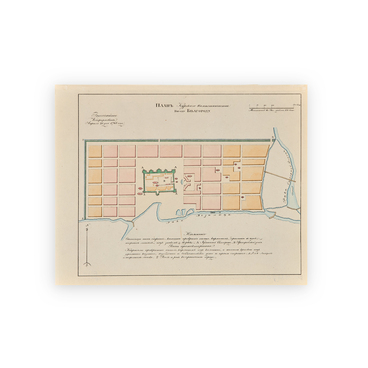In the collection of the Belgorod State Historical and Local History Museum, within the section dedicated to the Battle of Poltava, there is a reconstruction of the banner of the Belgorod Infantry Regiment, the original of which is kept in the Kremlin Armory.
The Belgorod Infantry Regiment was formed in 1697 from soldiers of the Preobrazhensky and Semenovsky regiments as an elite unit of General Christopher Regiman.
The Belgorod Infantry Regiment, under the command of Savva Vasilyevich Aigustov, participated in the Battle of Poltava on July 10 (June 27), 1709. Displaying fortitude, courage, and heroism, Aigustov’s soldiers not only stopped the attacking Swedes in their sector, but also, having broken the enemy’s resistance, went on a counteroffensive. During the Battle of Poltava, Peter the Great expressed his “gracious word” to the Belgorod soldiers 12 times.
In 1712, Peter I issued a decree introducing banners for regiments with emblems reflecting their name, including the Belgorod Regiment. At that time, the concepts of “emblem” and “coat of arms” had some differences: the emblem was considered a symbolic representation of an idea in a drawing or sculpture, while the coat of arms was composed according to certain rules and had a defined shape. A shield was an integral part of the coat of arms. At that time, the guide for the creation of coats of arms, first regimental, and later urban, was the book “Symbols and Emblems, ” printed in 1705 in Amsterdam in Russian.
The prototype for the emblem of the Belgorod Regiment was derived from the emblems in this book, depicting a running lion with a rooster above it. However, the rooster was later replaced by an eagle. What was the reason these particular images were chosen out of more than eight hundred featured in the mentioned book? Firstly, it was due to the glorious military victories of the Belgorod Regiment, which especially distinguished itself in the Battle of Poltava: the eagle is a symbol of Russia, soaring over the fleeing lion — the symbol of Sweden. Secondly, the mottos also played a role: “I make even the bravest tremble, ” and “I came, I saw, I conquered.” Later, a more accurate translation of these mottos was made: “Even the bravest trembles” and “Came, saw, conquered.“
This emblem has become the symbol of the Belgorod
Regiment from 1712. Subsequently, it was transferred with some changes to the
coats of arms of the Belgorod Province and Belgorod.


